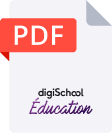In today’s world, information is everywhere. We can read the press, watch television, listen to the radio, but most people get their news from the Internet. The Internet is an easily available and unlimited source of information but also conveys propaganda and fake news. How can we access reliable information in the digital age?
I Access to information
Before the age of the internet, people mainly got informed through the radio, television or the written press. Today, printed newspapers and magazines are still seen as a reliable way to access information. However, only 8.4% of British people use print as their main source of news whereas more than 50% go online.
More and more British people find news via various search engines like Google (20%) and via social media like Facebook (25%). Younger people in particular increasingly use websites and apps, search engines and social networks. In 2018, the BBC was the only news media organisation in the UK that reached more people with online news than Facebook.
➞ More figures at: bit.ly/PbacAng_08a
The press has often been considered as the 4th power, especially in the USA: it is seen as a counter power limiting the three others (executive, legislative and judicial powers) and preventing political misconducts. Today, the Internet is often called the 5th power as it is supposed to be controlled by society itself and is not regulated by the state.
II Fake news and disinformation
Repère
Vocabulary• to convey: transmettre, véhiculer
• print: la presse écrite
• a hoax: un canular
Fake news is false and often sensational information that appears as real. The purpose of these deliberate hoaxes is to spread in the media, mostly on the Internet, usually for financial or political gain.
There have been lies and misinformation in the media since the beginning of the printed press; however, new technologies have made it easier for them to be created and spread. Fake news multiplied at an incredible speed during the 2016 presidential campaign in the USA. For instance, the false story of an “FBI Agent Suspected In Hillary Email Leaks Found Dead In Apparent Murder-Suicide” was shared on Facebook over half a million times.
Disinformation often starts on anonymous platforms on the web, moves onto closed groups (Twitter DM groups or WhatsApp groups), and then onto open social networks like Twitter, Facebook and Instagram where it spreads worldwide.
III How to sort out information
58% of people worry about made up news. Fact-checking and critical thinking have become more important than ever to distinguish false information from the truth.
We can easily turn to reputable media to check if and how the news is treated. The main media like the Washington Post, the New York Times, and CNN (in the USA) mostly produce fact-check reports and reliable information.
On the web, we can also find numerous platforms to check the truthfulness of the news we come across. They give us strategies to spot fake news and prevent its spread. FactCheck.org, Snopes.com or Politifact.com for instance offer useful fact-checking services.
Repère
Vocabularyto weigh sth. against sth.: comparer (to weigh: peser)
Of course, we can’t verify everything we read or see on social media. But we can spend some time questioning the reliability of the news, weighing one source against another and using our insight and reflection.
